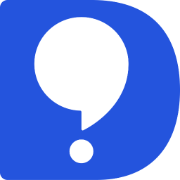Subjective Type

Given a non empty set X, consider $$P(X)$$ which is set of all subsets of $$X$$. Define the relation $$R$$ is $$P(X)$$ as follows:
For subsets $$A, B$$ in $$P(X), ARB$$ if and only if $$A\subset B$$. Is R an equivalence relation on $$P(X)$$? Justify your answer
Solution
$$Let\quad X=\{ 1,2,3\} $$
$$ P(X)$$=Power set of $$X$$=Set of all subsets of $$X$$.
=$$\left\{ \phi ,\{ 1\} \right\} ,\{ 2\} ,\{ 3\} ,\{ 1,2\} ,\{ 2,3\} ,\{ 1,3\} ,\{ 1,2,3\} \} \\ Since\quad \{ 1\} \subset \{ 1,2\} \\ \{ 1\} R\{ 1,2\} \\$$
$$ { \because of\quad ABCD,all\quad elements\quad of \quad A\quad are\quad in\quad B} $$
$$ARB$$ means $$A\subset B$$
here,relation is $$R=\{ (A,B):A\quad and\quad B\quad are\quad sets,ACB\} $$
Since every set is a subset of itself.
$$ACA\quad \therefore (A,A)\epsilon R,\quad$$R is reflexive.
To check whether symmetric or not,
If$$(A,B)\epsilon \quad ,then\quad (B,A) \epsilon R.$$
$$If(A,B)\epsilon R,\quad A\subset B\\ but\quad B\subset A\quad is\quad not\quad true.\\ eg:-Let\quad A=\{ 1\} \quad and\quad B=\{ 1,2\} $$
As all elements of $$A$$ are in $$B \quad A\subset B$$.
But all elements of $$B$$ are not in $$A$$
$$\therefore B\subset A$$ is not true.
$$\therefore R$$ is not symmetric.
Since $$(A,B) \epsilon R \quad and (B,C) \epsilon R of A\subset B\quad and\quad B\subset C$$
then $$A\subset B$$
$$\Rightarrow (A,C)\epsilon R\\ So,\quad If\quad (A,B)\epsilon R\quad and\quad (B,C)\epsilon R,\\ then\quad (A,C)\epsilon R$$
$$ \therefore R$$ is transitive.
hence $$R$$ is reflexive and transitive but not symmetric.
hence, $$R$$ is not an equivalence relation since it is not symmetric.
Sets, Relations and Functions
State true or false.
Given universal set= $$\displaystyle =\left \{ -6,-5\frac{3}{4}, -\sqrt{4}, -\frac{3}{5}, -\frac{3}{8}, 0, \frac{4}{5}, 1, 1\frac{2}{3}, \sqrt{8}, 3.01, \pi , 8.47 \right \}$$
From the given set, the set of integers is $$\displaystyle \left \{ -6,-\sqrt{4}, 0,1 \right \}$$.
Sets, Relations and Functions
State true or false.
Given universal set= $$\displaystyle =\left \{ -6,-5\frac{3}{4}, -\sqrt{4}, -\frac{3}{5}, -\frac{3}{8}, 0, \frac{4}{5}, 1, 1\frac{2}{3}, \sqrt{8}, 3.01, \pi , 8.47 \right \}$$
From the given set, find set of non-negative integers is $$\displaystyle \left \{0,1 \right \}$$.
Sets, Relations and Functions
State true or false:
A set of rational number is a subset of a set of real numbers.
Sets, Relations and Functions
What universal set (s) would you propose for each of the following:
The set of isosceles triangles.
Sets, Relations and Functions
Let $$A, B$$ and $$C$$ be sets such that $$\phi = A\cap B \subseteq C$$. Then which of the following statements is not true?
Sets, Relations and Functions
Let X be a set of $$5$$ elements. The number d of ordered pairs (A, B) of subsets of X such that $$A\neq \Phi, B\neq \Phi, A\cap B=\Phi$$ satisfies.
Sets, Relations and Functions
For any set $$A$$, if $$A\subseteq \phi \Leftrightarrow A=\phi$$.
Sets, Relations and Functions
Examine whether the following statements are true or false:
$$(a,b)\not{\subset}(b,c,a)$$
Sets, Relations and Functions
Examine whether the following statements are true or false:
$$(a,e) \subset$$ ($$x : x$$ is a vowel in the English alphabet)
Sets, Relations and Functions
Examine whether the following statements are true or false:
$$(1,2,3)\subset (1,3,5)$$


